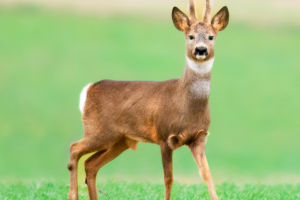Hello, Lykkers! Ever paused in the forest and heard the distinct, rhythmic tapping echoing through the trees?
That sound belongs to none other than the woodpecker, a bird full of surprises and incredible adaptations.
From their powerful beaks to their unique drumming calls, woodpeckers are a marvel to observe, each peck serving a purpose beyond what meets the eye.
The Adaptations of a Master Driller
Woodpeckers are famous for their distinctive ability to hammer into wood at high speeds. But how do they manage this without hurting themselves? These birds have evolved several incredible adaptations that allow them to peck at tree trunks up to 20 times per second without damaging their brains.
First, woodpeckers possess a thick, spongy layer of tissue between their skull and brain, acting as a shock absorber. This prevents the brain from experiencing harmful impacts. Their strong neck muscles also help absorb the force of each peck, while their beak is structured to withstand the constant drilling.
In addition, woodpeckers have specialized feet and tails. With two toes facing forward and two facing backward, their feet are perfect for gripping onto trees. Meanwhile, their stiff tail feathers help balance and support them while they work. These features allow woodpeckers to hold steady even on vertical surfaces, giving them an edge in hunting for food and building nests.
Why Do Woodpeckers Peck?
Woodpeckers use their powerful beaks for several important reasons. One of the most common is to search for insects. As expert foragers, they peck into tree bark to find insects like beetles, ants, and larvae hidden beneath the surface. Their long, sticky tongues are perfect for reaching into the crevices they create, pulling out tasty meals.
Another reason woodpeckers peck is to carve out nesting cavities. Unlike many birds that build nests from twigs and leaves, woodpeckers create deep holes in trees for their homes. These safe, enclosed spaces protect their eggs and young from predators and harsh weather.
And, of course, woodpeckers also peck to communicate. The drumming sound you hear in the woods isn't just for fun — it's often a way for woodpeckers to mark their territory or attract a mate. Each species of woodpecker has its own distinctive drumming rhythm, allowing them to communicate without even making a vocal sound.
Different Species, Different Habits
There are more than 200 species of woodpeckers found all over the world, each with its own unique behaviors. Some, like the pileated woodpecker, are large and loud, creating deep, resonant sounds as they peck into trees. Others, such as the downy woodpecker, are smaller and quieter but just as industrious.
The habitat of a woodpecker depends on the species, but they are commonly found in forests, woodlands, and even urban areas with large trees. Their role in the ecosystem is crucial, as they help control insect populations and create habitats for other animals. Once woodpeckers abandon their tree cavities, other species like owls, bats, and squirrels often move in, benefiting from the ready-made shelter.
How to Spot a Woodpecker
Spotting a woodpecker can be a rewarding experience, and you don’t need to venture deep into the wilderness to find one. Look for them in areas with tall trees, where their distinctive drumming will often give away their location. Watching a woodpecker at work is mesmerizing — seeing how it effortlessly pecks into the bark, moves around the tree, and listens for its next meal.
If you have trees in your garden or live near a park, you may be lucky enough to have a woodpecker visit. Providing food like suet or leaving dead trees in your yard (if safe to do so) can attract them, giving you a chance to observe these fascinating birds up close.
Lykkers, woodpeckers bring a unique rhythm to nature, working tirelessly to feed, communicate, and build their homes. With each tap of their beaks, they contribute to the balance of the ecosystems they inhabit. So, next time you're near a wooded area, listen closely — you might just hear the subtle music of a woodpecker going about its day.
Have you ever had the chance to watch a woodpecker up close? It might just become your next favorite nature moment!


